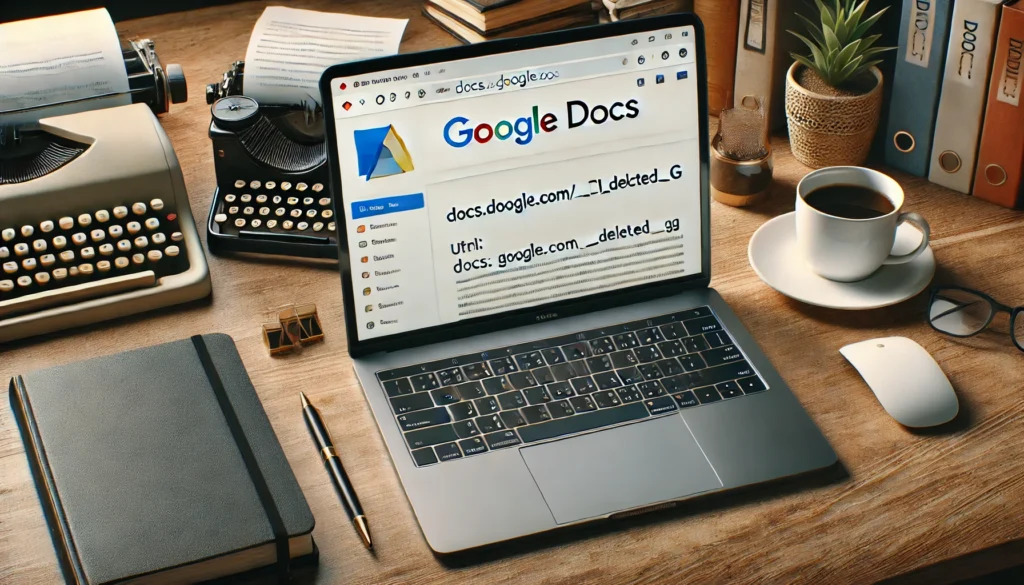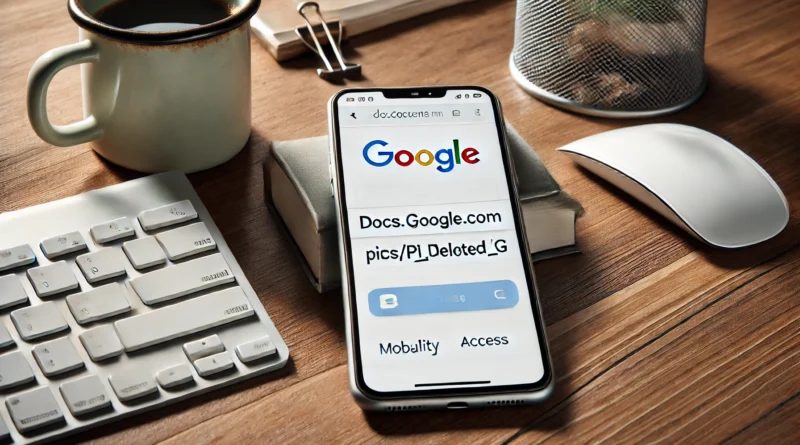The Ultimate Guide to docs.google.com/document/pii_deleted
Introduction
In today’s digital age, data privacy is not just a preference but a necessity. As collaboration tools like Google Docs dominate workplaces and educational institutions, concerns about sharing sensitive information have surged. One specific feature that has piqued curiosity is the URL structure docs.google.com/document/__pii_deleted__.
This article explores what __pii_deleted__ means, why it’s essential, and how it aligns with privacy standards. By the end, you’ll have a comprehensive understanding of how this mechanism safeguards your information and how to optimize document sharing securely.
What is docs.google.com/document/pii_deleted?
The term docs.google.com/document/__pii_deleted__ refers to a URL generated by Google Docs when sharing a document link. It signifies that personally identifiable information (PII) has been removed from the link for privacy and compliance reasons.
PII includes sensitive data such as names, email addresses, phone numbers, or any detail that could identify an individual. By sanitizing these links, Google ensures that the shared URLs do not expose users to security or privacy risks.
How Google Handles PII in Shared Links
Google’s robust privacy algorithms scan shared document links to identify PII. If such data is detected, the URL is modified, replacing sensitive parts with the placeholder __pii_deleted__. This process aligns with global data privacy regulations like GDPR (General Data Protection Regulation) and CCPA (California Consumer Privacy Act).
Example:
| Before Sanitization | After Sanitization |
| docs.google.com/document/user123 | docs.google.com/document/pii_deleted |
This ensures that no private information is inadvertently exposed to unauthorized parties.
Why is PII Removal Important?
The removal of PII from shared links is vital for several reasons:
- Preventing Data Breaches: Exposing PII can lead to phishing attacks or identity theft.
- Legal Compliance: Many organizations must adhere to privacy laws, and PII removal helps meet these standards.
- Enhancing Trust: Ensuring privacy builds confidence among collaborators.
By replacing PII in document links, Google takes proactive steps to mitigate risks associated with data sharing.
How to Create Secure and Shareable Google Docs Links
Sharing Google Docs securely is easy when following these steps:
- Open the document and click on the “Share” button.
- Choose the appropriate sharing settings, such as “Anyone with the link” or “Specific people.”
- Avoid including any sensitive details in the document name or comments.
- Use the “Copy Link” feature to generate a sanitized link automatically.
Best Practices for Maintaining Data Privacy in Google Docs
- Audit Links Regularly: Periodically review shared links to ensure no sensitive data is exposed.
- Educate Your Team: Train collaborators on privacy protocols and the importance of sanitized links.
- Use Password Protection: For highly confidential documents, consider using additional layers of security.
Common Myths and Misunderstandings About “pii_deleted”
Myth 1: __pii_deleted__ Means the Document is Inaccessible.
This placeholder does not affect accessibility. Authorized users can still view and edit the document.
Myth 2: You Can Reverse __pii_deleted__.
Once PII is removed, it cannot be retrieved from the sanitized link for security reasons.
Myth 3: It Happens Only for Public Links.
Google applies PII removal across all shared links, whether public or restricted.
Technical Insights: How “pii_deleted” Works
Google uses advanced machine learning algorithms to detect patterns resembling PII in document metadata and URLs. Once identified, these patterns are replaced with __pii_deleted__. While the system is efficient, occasional false positives may occur, which can be rectified by the document owner.
Conclusion
The URL structure docs.google.com/document/__pii_deleted__ represents a vital step towards ensuring data security in collaborative environments. By understanding how this system works, you can share documents confidently, knowing that sensitive information is protected.
This guide has covered everything from the basics to advanced practices, helping you leverage Google Docs securely. Remember, privacy is not just a feature—it’s a responsibility.
FAQs about docs.google.com/document/__pii_deleted__
1. Can I customize the __pii_deleted__ placeholder in the link?
No, the __pii_deleted__ placeholder is a standardized format used by Google. It cannot be customized, as it is automatically applied to ensure consistency and security in link sanitization.
2. What happens if I manually remove the __pii_deleted__ from the URL?
Manually altering the URL by removing __pii_deleted__ will not restore the original PII or metadata. In most cases, it will render the link invalid or inaccessible.
3. Does the __pii_deleted__ mechanism work with other Google Workspace tools?
Yes, Google applies similar PII removal processes to other tools within Google Workspace, such as Sheets, Slides, and Forms, ensuring comprehensive privacy protection across platforms.
4. How does __pii_deleted__ impact third-party integrations?
For integrations like project management tools or CRM systems, the __pii_deleted__ placeholder ensures that sensitive data is not exposed during link sharing. However, it’s important to verify compatibility with third-party platforms to avoid errors.
5. Can I report issues if __pii_deleted__ removes non-sensitive information incorrectly?
Yes, you can report such issues to Google Support. While rare, false positives may occur, and Google continuously refines its algorithms based on user feedback.
Recommended Articles:
- Who Is Stasha Mikov? A Comprehensive Guide to Her Life and Legacy
- The Ultimate Guide to Rarefied Tech: Explore the Best of Technology at https://rarefiedtech.com
- General News on TheWeeklySpoon.com: Comprehensive Coverage and Unique Features
- Royme Socarras: A Multifaceted Life of Inspiration
- The Ultimate Guide to bit.ly intro-slide24

